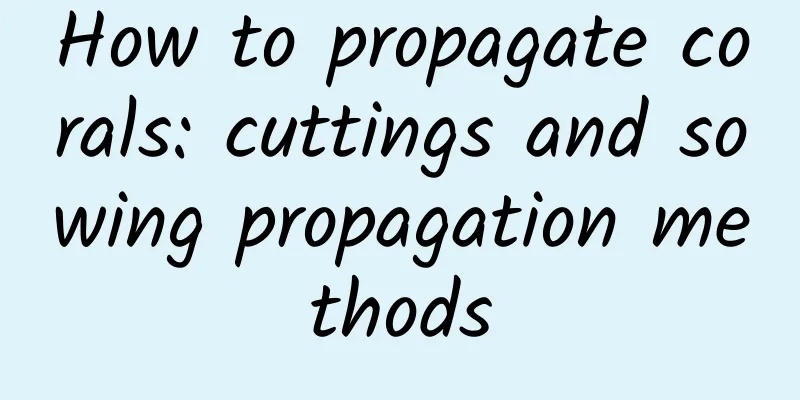When is the best time to plant konjac?

|
Many friends like to order konjac tofu when they eat malatang or hot pot. Some people who are losing weight now also like to eat konjac noodles. The raw materials of these konjac products are all inseparable from konjac. Konjac is grown in many places in China. Let’s learn together when is the best time to grow konjac? When is the best time to plant konjac? Konjac is suitable for planting in Yunnan, Guizhou, Sichuan, southern Shaanxi and western Hubei, where the climate is warm and humid and the soil conditions are good. In terms of planting time, konjac is mainly divided into two methods: spring sowing and winter sowing. The best time for spring sowing is after April each year, while winter sowing is usually carried out between December and the Spring Festival. Control of common diseases and pests of konjac 1. Disease prevention and control Soil-borne diseases such as root rot, soft rot and dry rot can be controlled by spraying fungicides and choosing healthy and disease-resistant varieties to plant. Mixing the tubers with seeds before planting or dipping the roots of the seedlings before planting can reduce the incidence of diseases. Leaf spot disease is caused by fungi, which mainly harm the leaf surface and are more serious in summer and autumn. Prevention and control measures include using Genxiaozi compound microbial fertilizer for root irrigation and using Kunlunfeng disease-resistant and yield-increasing package for whole-plant spraying to improve the plant's adaptability and stress resistance. Brown spot, anthracnose, verrucous root ulcer, downy mildew, etc. are also common diseases of konjac. Reasonable crop rotation and planting of disease- and pest-resistant varieties can effectively reduce the occurrence of diseases. 2. Pest control Common insect pests of konjac include aphids, moths and red spiders. Prevention and control measures include spreading the Zhuidebao biological fertilizer, which has a certain preventive and control effect on aphids, and spraying avermectin, malathion liquid, and anti-aphid carb on the leaves in the early stages of the pest. Sweet potato hawk moth, bean hawk moth, cutworm moth, root maggot, etc. are also common pests of konjac, which can be killed by spraying insecticides. 3. Comprehensive management Agricultural prevention and control measures include disinfecting farmland soil , eliminating sources of pests and diseases, deep plowing the land, and using quicklime or sulfur powder to disinfect the soil. Crop rotation is also an important prevention and control measure that can reduce the occurrence of diseases. Choose disease-resistant varieties and disinfect the seed taro, such as sun-drying and soaking with methyl thiophanate or carbendazim. Applying well-rotted organic fertilizer can promote healthy growth of plants and enhance their disease resistance. Strengthen field management, completely eliminate diseased debris in the field, and reduce the population of pathogens. 4. Chemical control For soft rot and leaf blight, streptomycin sulfate, chlorothalonil or copper hydroxide can be used for spraying in the early stages of the disease. The main prevention and control of white rot is to remove the diseased plants and disinfect the diseased holes and surrounding soil with quicklime or carbendazim. 5. Physical methods Using lights and sex attractants to kill adult insects is an economical and environmentally friendly physical control method. 6. Other prevention and control measures Spray agricultural streptomycin for protection before spreading the leaves of konjac. If diseased plants are found, use agricultural streptomycin to block the area around the diseased plants. Use it 3-4 times in a row. The above is an introduction to the suitable time for planting konjac. Konjac prefers a warm and humid growing environment, so some dry and cold areas in my country are not suitable for planting.
|
<<: How to grow bicolor jasmine in winter
>>: How to grow Cordyceps sinensis
Recommend
How to plant garlic, garlic growth process
1. How to plant 1. Seed selection: When planting ...
Fuleshan Chrysanthemum Exhibition Time
1. Time The time of the Fule Mountain Chrysanthem...
How to hydroponically cultivate pink palm
Select pot Choose a flowerpot according to the si...
Is it good to use fish water to water flowers? The correct way to use fish water to water flowers
Is it good to use fish water to water flowers? It...
The difference between morning glory and cup flower
1. Difference of blades The cup flower is short a...
Cultivation methods and precautions of Xiaopan Bodhi
Xiao Pan Bodhi is very easy to maintain because t...
How to care for money tree in winter
one. Temperature control and cold protection: Thi...
How to prune Desert Rose?
Desert rose , as an ornamental flowering plant th...
Is willow peach suitable for domestic cultivation?
1. Is it suitable for domestic breeding? The olea...
How to manage orchids during the budding period
1. Reduce watering When the orchid sprouts, you c...
The value of Patrinia
1. Can resist pathogens and those microorganisms ...
How to water succulents and how often to water them
1. Watering method 1. For newly planted succulent...
When is the best time to grow celery seedlings (celery sowing and seedling raising methods and planting time)
Celery is a general term, why? Because there are ...
How to grow lisianthus potted plants
1. Temperature Lisianthus has a very low resistan...
Is Buddaria poisonous?
Toxicity of Buddaria In traditional Chinese medic...









